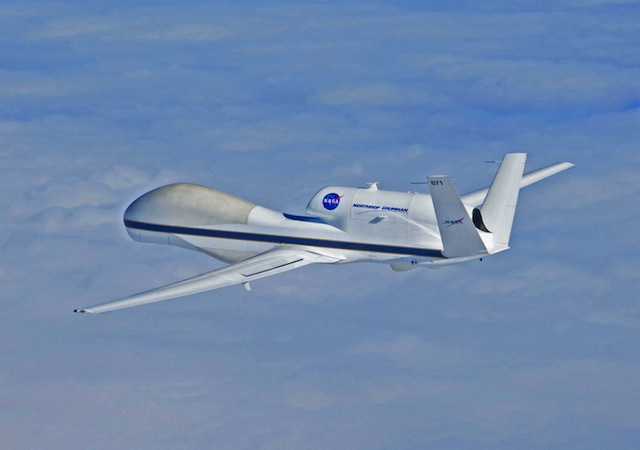NASA has partnered with Airware to develop a traffic management system for safe low-altitude operations with unmanned air vehicles.
Utilising Airware’s experience in developing hardware, software and cloud services for commercial UAVs, the alliance will allow both parties to test and validate a wide range of scenarios to enable the development of an unmanned air systems traffic management (UTM) system.
Airware and NASA will operate and test aircraft and sensors, as well as software for aircraft spacing, collision avoidance and 4D trajectory modelling, using the same interface.
“To build out a traffic management system for small UAS, you need to test a large number of aircraft – fixed-wing, multirotor, flying-wing, gas-powered, battery-powered and many others, to simulate what will exist in future operational scenarios,” says Jesse Kallman, Airware’s head of business development and regulatory affairs.
“We’re excited to partner with NASA because our technology will allow us both to work towards a common goal of enabling safe and efficient commercial UAS operations, in addition to supplementing the work we are already conducting in the areas of collision avoidance and GPS-denied flight, among others.”
On 3 September, meanwhile, NASA issued a solicitation requesting information from US organisations interested in collaborating with the administration on UTM research and development for low-altitude, class G airspace UAV flight.
“With the collective goal of safely enabling these operations at lower altitude by UTM,” the collaboration will include “a series of UTM builds with evolving complexity”, the solicitation says.
It is unclear as to whether or not the Airware work comes under this initiative. However, the agreement between Airware and NASA was announced on 16 September, while the solicitation does not request responses from interested parties until 24 September.
A UTM workshop conducted by NASA in February discussed the need for airspace management system automation, procedures, rules, and regulations to safely enable low-altitude airspace and UAV operations, which indicates that this development is a priority to NASA.
There is no financial deal associated with the solicited agreement. NASA will be responsible for testing the algorithms and UTM capabilities to safely enable low-altitude operations and operational requirements for a range of UAV scenarios and missions.
A working prototype of a UTM system will be the result of the work, and information produced will be used to inform bodies controlling airspace and future integration, such as the Federal Aviation Administration.

NASA
NASA is familiar with UAV operations, as it operates two Northrop Grumman RQ-4 Global Hawk systems. Although these are high altitude aircraft so sit above air traffic, they are routinely used for long periods of time and are significant to NASA’s earth science missions.
“The ability of the Global Hawk to autonomously fly long distances, remain aloft for extended periods of time and carry large payloads brings a new capability to the science community for measuring, monitoring and observing remote locations of Earth not feasible or practical with piloted aircraft, most other robotic or remotely operated aircraft, or space satellites,” NASA says.
Source: FlightGlobal.com






















